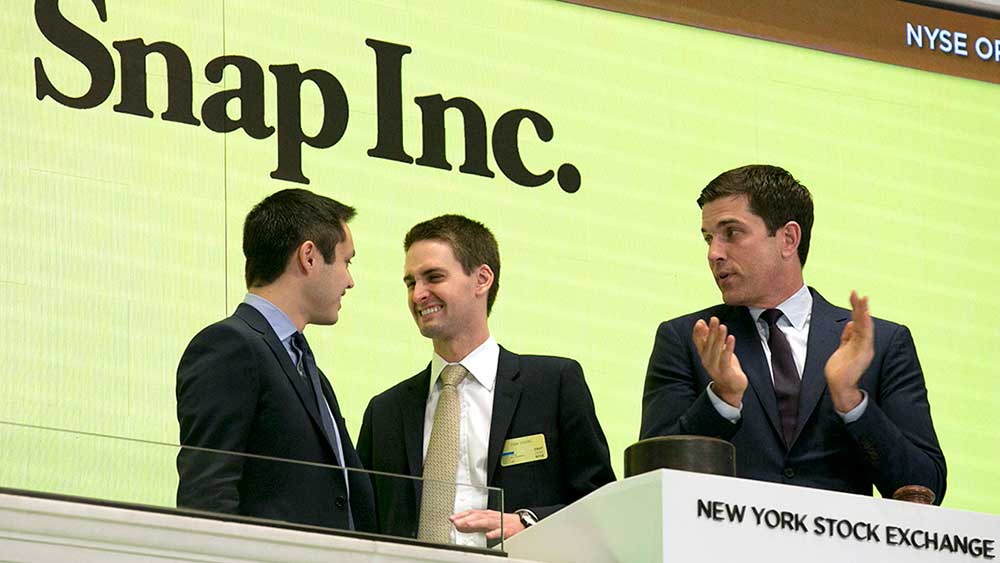Snap, the parent company of Snapchat, had a great day in its debut on the New York Stock Exchange. After pricing the IPO at $17 per share on Thursday, the stock opened at $24. It then closed the day at $24.48, a 44% premium to the people who bought it yesterday.
But like with all IPOs, not everybody got to access Snap’s IPO price. This is usually reserved for a smaller group of institutional investors and high-net worth individuals who are on good terms with the banks. Most investors didn’t have a chance to buy until today, so the gains for them are much smaller, Tech Crunch reported.
The debut draws more similarities to Twitter’s, which went public in 2013. The company saw a solid first day of trading, but then saw a lot of volatility in the following months. Facebook, on the other hand, had a rough first day as a public company, with the share price closing exactly where it opened (companies normally try to price it so it goes up about 20% on the first day). But then the company flourished on the stock market over time.
Snapchat went public at what was an interesting point in the company’s history. Unlike many companies, like Uber and Airbnb with sky-high valuations, Snapchat decided to go public earlier in its monetization, probably because it’s better to go public before the market considers the company overvalued.
Yet Snapchat is entering the markets at a time when growth has slowed, possibly due to Instagram copying its “stories” feature. And while revenue is quickly growing, they are also significantly unprofitable.
Hemant Taneja, an early investor in Snapchat and managing director at General Catalyst, said he was excited about Snapchat early on because of the “richness of innovation.” He saw that founder Evan Spiegel was “determined to make technology work for us, rather than change behaviors necessarily — like with ephemeral nature of communications.”
Unlike Facebook, Snapchat’s images disappear by default, a feature that baffled many people initially. But it proved to be popular and today’s debut on the stock market is a pivotal moment in technology history.
Can It Go the Distance?
On average, IPOs underperform the market in the three years after going public, according to Jay Ritter, a University of Florida professor who studies new share offerings. Since the March 2009 market bottom, after the financial crisis, the S&P 500 has climbed 254%, while the Bloomberg IPO index rose 165%.
What’s more, eight of the 10 biggest tech IPOs dropped by between 25 percent and 71 percent in their first 12 months post-IPO, a recent Reuters analysis found.
The fear is that Snap, like too many IPOs before it, will fizzle as well. One key date to watch out for is six months from now, in September, when the stock’s lockup expires. A lockup is the period after a stock sale when company insiders are forbidden to sell their holdings. This is meant to thwart insiders, who got shares for much less than the IPO price, from flipping the stock for an instant profit, CBS News reported.
When they do sell after the lockup, and if there’s a rush for the door, the price can take a pounding and regular investors can get hurt. To lessen that threat, Snap has imposed a year-long lockup for a quarter of the stock it sold, allocated to existing investors. On the other hand, that means there’s another date to watch out for, in March 2018.
Although Snapchat is immensely popular, the trouble is that it hemorrhages money. In 2016, it lost $515 million. Plus, the growth of its users is slowing, thanks to competition from established competitors.
That is why some wonder whether Snapchat is merely a fad whose appeal will wane, similar to what happened to both its chief rivals, Facebook and Twitter, after they went public in 2012.


